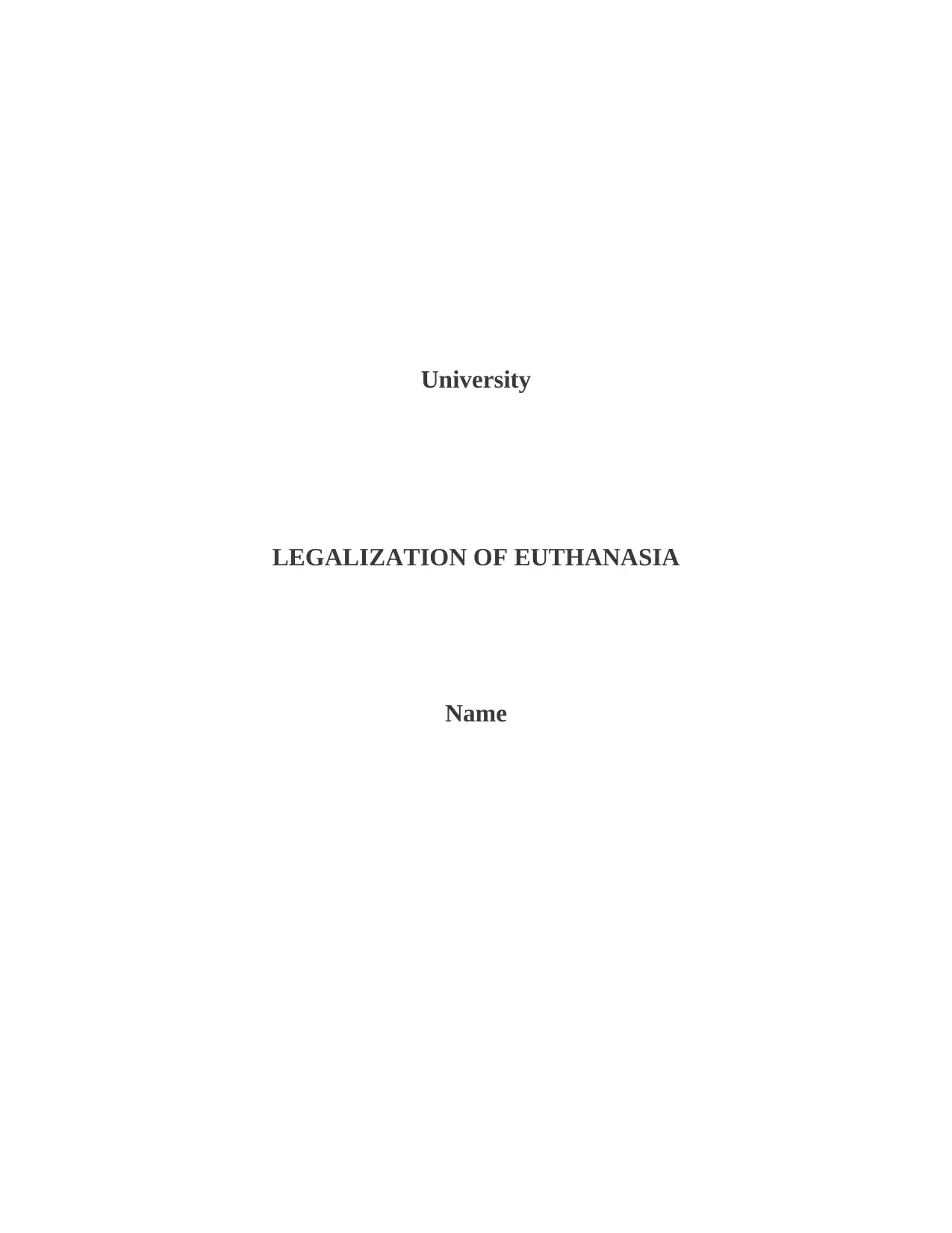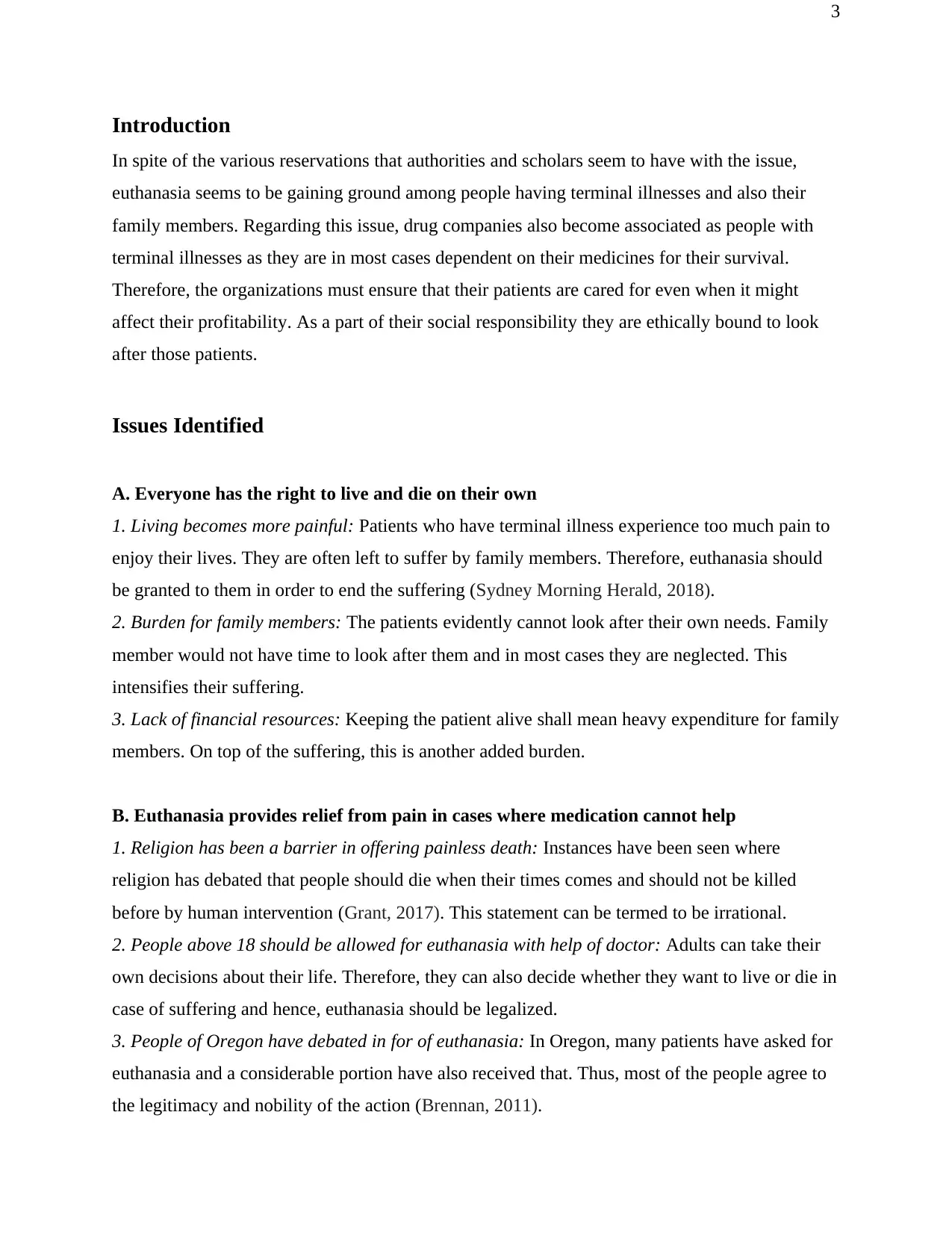University Essay: Arguments for Euthanasia Legalization
VerifiedAdded on 2021/10/27
|5
|817
|185
Essay
AI Summary
This essay explores the multifaceted debate surrounding the legalization of euthanasia. It begins by outlining the arguments in favor, emphasizing the right to die with dignity, the alleviation of suffering for terminally ill patients, and the potential burden on families. The essay then delves into the issues identified, including the patient's right to choose the end of their life, the burden on family members, and financial constraints. Furthermore, it discusses the role of religion in opposing euthanasia and the importance of allowing adults to make decisions about their own lives, referencing the Oregon model as a case study. The essay also highlights instances of doctors assisting patients, the use of technology to provide painless deaths, and the importance of ensuring patients die with dignity. Finally, it addresses the oppositions to euthanasia, primarily based on religious and theological grounds, and emphasizes the need for a robust legal framework to prevent misuse. The essay concludes by referencing various sources supporting the arguments presented.
1 out of 5












![[object Object]](/_next/static/media/star-bottom.7253800d.svg)